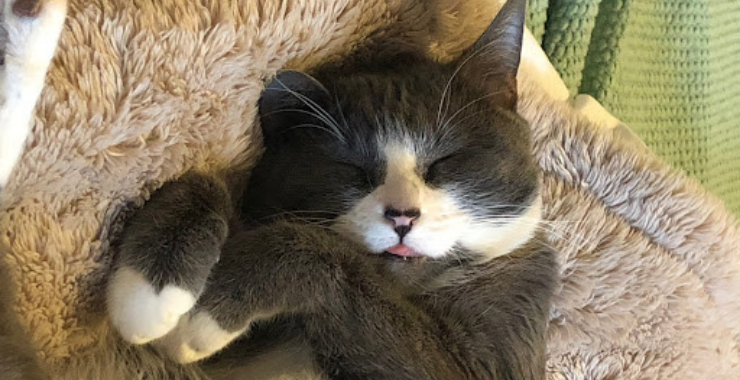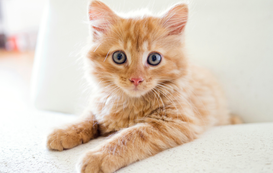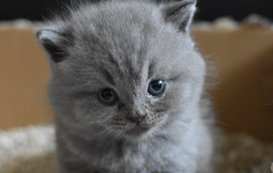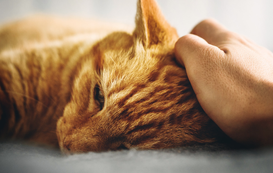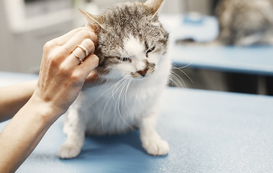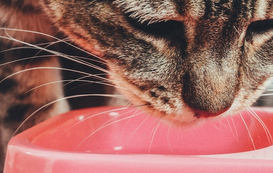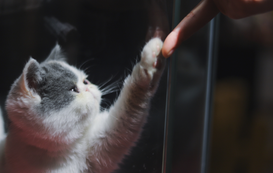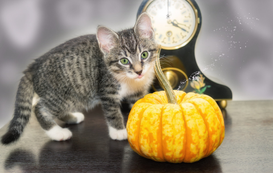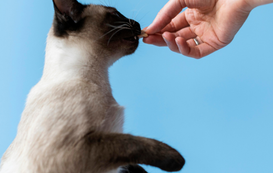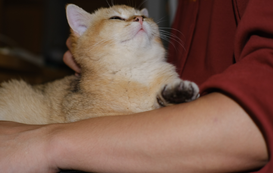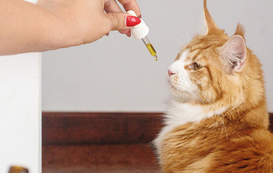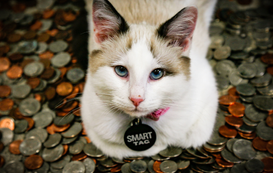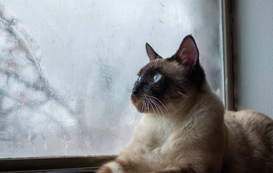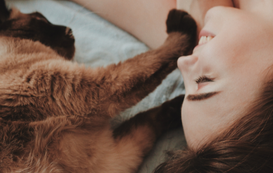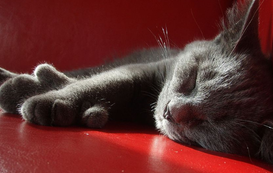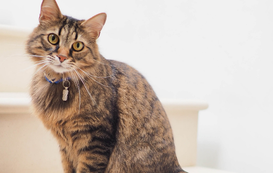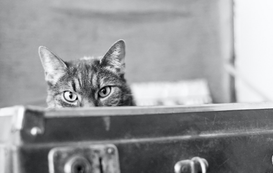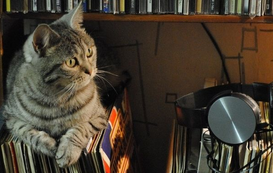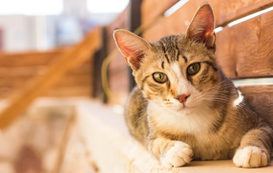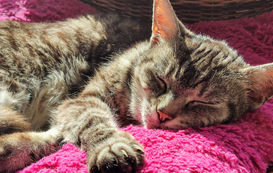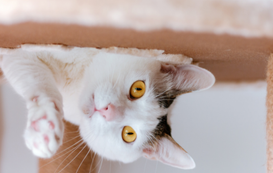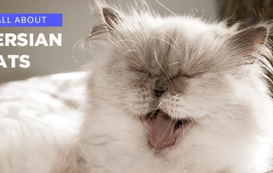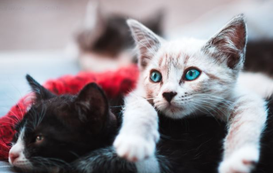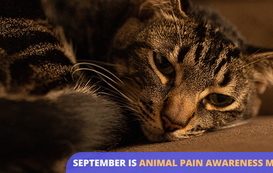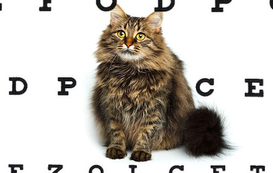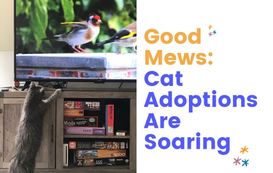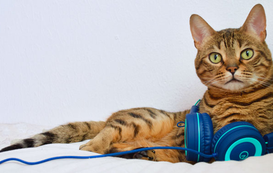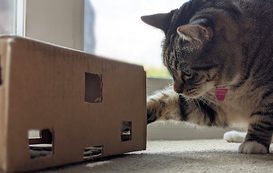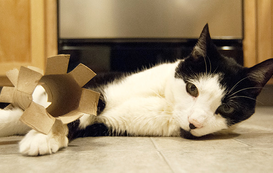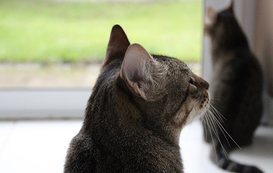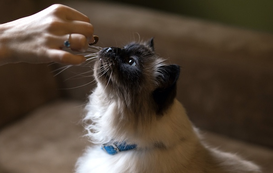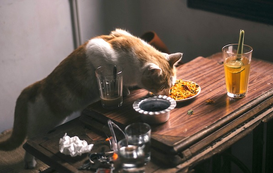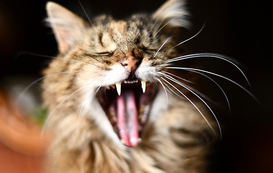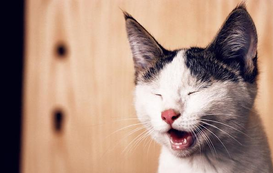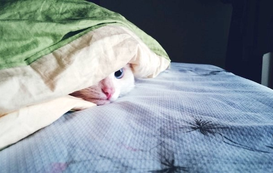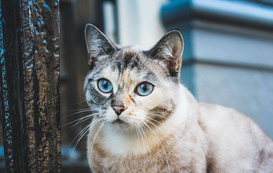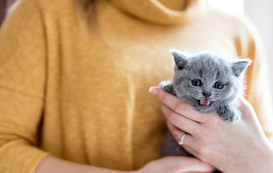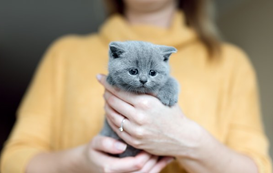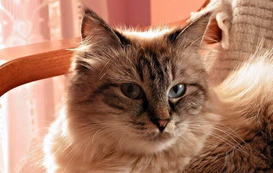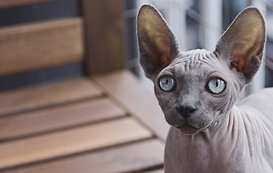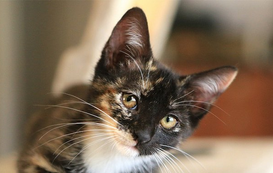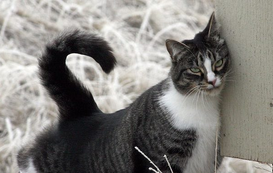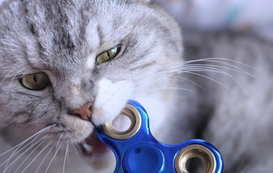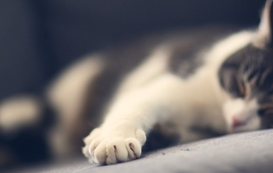Popular posts
Feline Stomatitis - Stormy’s Story
My stepdaughter J had been begging us for a kitten for months. Both of her stepsisters already had cats, and she wanted one to call her own, too. At first, I was worried about whether the feline kings of the house would accept a new addition, but I couldn’t resist poking around online at adoptable rescue kitties in our town. One of them really stood out to me - a female about six months old, with bright yellow-green eyes and the cutest little patch of gray fur on her chin.
Something about her spoke to me. So the next day, the four of us headed down to PetSmart to meet her in person. The shelter volunteer warned us that she was very shy and might act a little skittish. She gently picked up the little ball of gray and white fur and handed her to J.
It took less than five minutes for Stormy to work her magic on all of us. I knew as soon as she laid her fuzzy chin in the crook of J’s elbow and sighed that we were goners.
We filled out the adoption paperwork, bought food, toys, and supplies, and set Stormy up in J’s room for the first few days so she could get used to her new home. In that short amount of time, she managed to wrap her little tail even tighter around each of our hearts - my husband’s included. She was one of the sweetest, most even-tempered, and affectionate cats I’d ever been around.
I thought what the shelter worker said about her being shy was strange - Stormy seemed to love playing with us and being around us. And she loved having her chin scratched. We joked that she was a prissy eater because she would take one or two bites of her kibble, walk away, and very carefully lick her gums. Then a few minutes later, she’d start all over again.
We’d had her for about five days when I took her to our veterinarian for an initial checkup. I’d noticed her scratching around her ears a lot, so I thought she might’ve picked up some ear mites or maybe had wax buildup. Everything went fine at the appointment—her temperature was normal, her weight and eyes looked good, and her joints and belly felt fine.
Then, the vet opened her mouth.
He and I both gasped and said, “Oh, my God!” at the same time. We were shocked at what we saw.
If you’ve owned a cat for any amount of time, especially an older cat or one that’s been neglected, you’ve probably seen gingivitis. It looks like someone drew a line with a fine-tipped red marker right where the gums and teeth meet. This was not that.
This was so much worse than that.
Stormy’s poor gums were so swollen and inflamed, they looked like bright red puff paint. The swelling was everywhere, top and bottom, and even extended a little onto the roof of her mouth. She was old enough that her adult teeth had come in, but the vet pointed out to me where she’d already lost the top front two.
I’d never seen anything like it in my life. It looked extremely painful. Stormy was struggling so much during the oral exam that the vet let her go, and she ran into her carrier to hide.
“What’s wrong with her mouth?” I asked.
“It looks like stomatitis,” he said, shaking his head. “Poor baby.”
I’d never heard of stomatitis before. The vet explained that feline stomatitis (also called feline chronic gingivostomatitis) is a chronic condition where a cat’s immune system overreacts to the presence of plaque on the surface of their teeth. He said it’s sometimes triggered by an infection, but a lot of the time, there’s no known cause. He said it feels like having canker sores all over your gums, all the time.
“Can we fix it?” I asked.
He told me there were two treatment options available. The first involved bringing Stormy in for special dental treatments every few months, brushing her teeth daily at home, antibiotics to control bacteria in her mouth, and likely also prescription steroids. “Keep in mind, steroids increase the likelihood she’ll develop diabetes later in life,” the vet said. “Especially if we start her on them so young and have to keep her on them.” I didn’t like the sound of that at all.
The second option would be to remove every single one of her teeth surgically. I didn’t like the sound of that, either. But he said whole-mouth extraction was the only treatment he’d seen that offered a chance of fixing—not just managing—the problem.
The vet must’ve seen the sick look on my face because as gently as he could, he suggested the possibility of us returning her to the rescue. There was no way I could give her back. It would break J’s heart, for one. But I’d already grown so attached to the little fuzzball I thought it might break mine, too. She was our baby, and we were going to help her.
I took Stormy home, planning on talking things over with my husband and making a decision about which treatment to pursue. We both cringed at the thought of a six-month-old kitten with a mouth full of stitches, but we didn’t like the very real possibility of side effects from long-term medication either. Never mind how we were supposed to brush her teeth every day when her whole mouth was on fire.
And then there was the money aspect to be considered. We never like to admit it as pet parents, but sometimes there are treatments we just can’t afford. Whole-mouth extraction was a very expensive procedure, but it was a one-time expense. And when we weighed it against the cost of specialized dental treatments several times a year for the rest of her life, as well as ongoing prescription medications, and meds to treat the possible side effects of those meds, the choice became clear. I remembered what the vet had told me about the success rate of tooth extraction for stomatitis, and our minds were made up.
So I scheduled the appointment to have all of our precious kitten’s teeth pulled. After I dropped her off the day of the surgery, I sat in my car and cried. I couldn’t stop thinking about how scared she must be and wondering how much pain she would be in after she woke up. Would she wonder why we’d done this to her? Would she be scared of us now? What if the surgery didn’t work?
Turns out, I didn’t need to worry. The day after the surgery, it was obvious that even though every tooth in her mouth had been pulled less than 24 hours ago, she was already in less pain than before. She devoured every plate of her new canned food we put in front of her. She even wanted to play! My tears of worry turned to tears of relief.
As her recovery progressed, my husband and I realized some things we hadn’t understood before but now made perfect sense:
Stormy wasn’t “shy” or “skittish.” She’d been in horrible pain. If anything, stomatitis proved how sweet and special she really was. In spite of being in constant agony, she still wanted to love and be loved.
The scratching at her ears I was worried about? At one of her surgical follow-ups, the vet told me that it was probably her trying desperately to do something—anything—to relieve the constant ache in her mouth.
She also wasn’t a “prissy” eater like we thought. She could only bear to take a couple of bites of dry kibble at a time before the pain got to be too much for her.
And the times my husband would scratch her cheeks and chin, and she’d be loving it, then suddenly jerk her head away? He’d unintentionally hit a super-sensitive spot in her inflamed mouth.
It’s been over seven years since Stormy had her surgery, and she’s doing better than ever. We never had to put her on any medications or give her any other treatment for her stomatitis, which has completely resolved. Her tongue sticks out a little now, and she drools on my jeans sometimes, but that just makes her even more adorable to us. I’ll be forever thankful to our wonderful veterinarian for taking such good care of her.
This is just one of many reasons why it’s so important to bring your fur-babies in for routine veterinary exams. Even when everything may appear okay on the outside, it can be incredibly helpful (and sometimes life saving!) to have a professional check things out. If nothing else, it will give you peace of mind that your fluff-ball is okay, and - in the event something unseen is going on - may very well spare them from pain like our precious Stormy had been experiencing.
Photo by Meghan Workman

